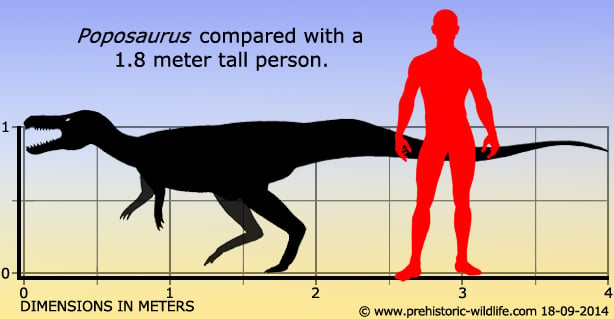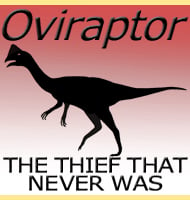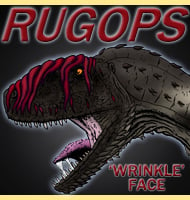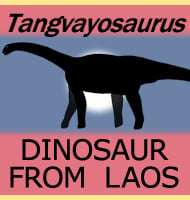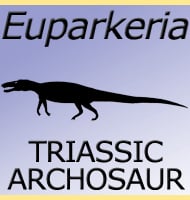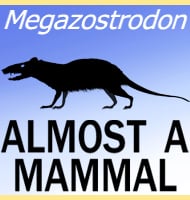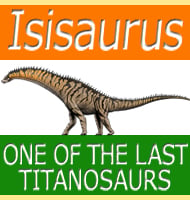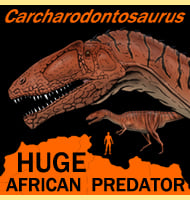In Depth
The rauisuchians were the top land predators of the Triassic, and remained so until the appearance of the large theropod dinosaurs. These rauisuchians are usually portrayed as long quadrupedal predators, and for the most part this is true. However there is a surprisingly little known group of bipedal rauisuchians called the poposaurids, of which Poposaurus is the type genus. Further to this the poposaurids of the Poposauridae are situated within the Poposauroidea, a group of rauisuchians that is noted for the presence of several unusual members.
Poposaurus was first named upon the basis of partial post cranial remains, and over the years these have been interpreted as belonging to a variety of different creatures, including various types of dinosaurs from ornithischians, like iguanodonts and stegosaurs, to even sauropodomorphs. Towards the end of the twentieth century the classification of Poposaurus steadily became more accurate, eventually resting within the Rauisuchia. Eventually in 1995, the description of new Poposaurus fossils by Robert Long and Phillip Murry saw Poposaurus split from the Rauisuchidae which contains genera such as Saurosuchus and Postosuchus, and established the Poposauridae.
More new fossils of Poposaurus were discovered in 2007, and these led to another genus named Lythrosuchus being identified as a synonym to Poposaurus. Then in 2011 another and this time almost complete Poposaurus missing only the skull was located. 2013 saw the first description of Poposaurus cranial remains by Parker & Nesbitt, giving a clearer indication as to the form of the Poposaurus skull.
The modern twenty-first century reconstruction of Poposaurus is of a swift bipedal predator capable of running down fast and agile prey, quite a bit different from the heavier set quadrupedal members of the related rauisuchidae that are perceived to be masters of ambush hunting. This bipedal nature however was actually first speculated in the original 1915 description of Poposaurus fossils by M. G. Mehl, though he also considered the form of the hip of the Poposaurus holotype to be an indicator that it was a dinosaur.
With more complete specimens found, and more accurate studies made, Poposaurus has been confirmed as an obligatory bipedal animal, though one that it thought to have developed its stance totally independently from the emerging dinosaurs of the Triassic. This stance is thought to be developed from an ancestral ability to ‘high walk’. Today we can observe crocodiles ‘high walking’ by adjusting their limbs so that they are almost vertical to the ground, enabling them to lift their belly and often also their tail clear off the ground. Amongst modern reptiles this ability is unique to the crocodiles, and though not directly related to rauisuchians like Poposaurus, they are still distant cousins.
Reconstructions of the hind legs of Poposaurus show that the most developed muscles were those concerning the back and forth movement of the leg, a very clear indication of bipedal locomotion. The fore legs are proportionately much shorter than the rear, which also indicates that there was no weight bearing purpose for them. Bipedal locomotion has also been proposed for other rauisuchian genera that have more traditionally been seen as quadrupedal, however at this time it seems that Poposaurus is an exception and not a rule. For example, exceptionally well preserved remains of a hind leg upon a specimen of Prestosuchus have confirmed a very different muscle development to Poposaurus, with a preference for limb rotation, indicating that members of the rauisuchidae were most likely quadrupeds, though with the ability to rear up on hind legs.
Further Reading
- The skull of Paleorhinus, a Wyoming phytosaur. - The Journal of Geology 15 (2): 121–151. doi:10.1086/621382. - J. H. Lees - 1907. - Poposaurus gracilis, a new reptile from the Triassic of Wyoming. - The Journal of Geology 23 (6): 516–522. doi:10.1086/622268. - M. G. Mehl - 1915. - Late Triassic (Carnian and Norian) tetrapods from the southwestern United States. - Bulletin of the New Mexico Museum of Natural History and Science 4: 1–254. - R. A. Long & P. A. Murry - 1995. - A revision of Poposaurus gracilis (Archosauria: Suchia) based on two new specimens from the Late Triassic of the southwestern U.S.A. - Pal�ontologische Zeitschrift 81 (2): 131–145. doi:10.1007/BF02988388. - J. C. Weinbaum & A. Hungerb�hler - 2007. - Anatomical reconstructions of respiratory morphology and hindlimb musculature in Poposaurus gracilis (Archosauria: Poposauroidea) and related dinosauriformes (Ph.D. thesis). University of Pennsylvania. - E. R. Schachner - 2010. - The bipedal stem crocodilian Poposaurus gracilis: inferring function in fossils and innovation in archosaur locomotion. - Bulletin of the Peabody Museum of Natural History 52 (1): 107–126. doi:10.3374/014.052.0102. - J. A. Gauthier, S. J. Nesbitt, E. R. Schachner, G. S. Bever & W. G. Joyce - 2011. - Pelvic and hindlimb myology of the basal archosaur Poposaurus gracilis (archosauria: Poposauroidea). - Journal of Morphology 272 (12): 1464–1491. doi:10.1002/jmor.10997. - E. R. Schachner, P. L. Manning & P. Dodson - 2011. - Cranial remains of Poposaurus gracilis (Pseudosuchia: Poposauroidea) from the Upper Triassic, the distribution of the taxon, and its implications for poposauroid evolution. - Geological Society, London, Special Publications. v. 379. http://dx.doi.org/10.1144/SP379.3. - W. Parker & S. Nesbitt - 2013.
